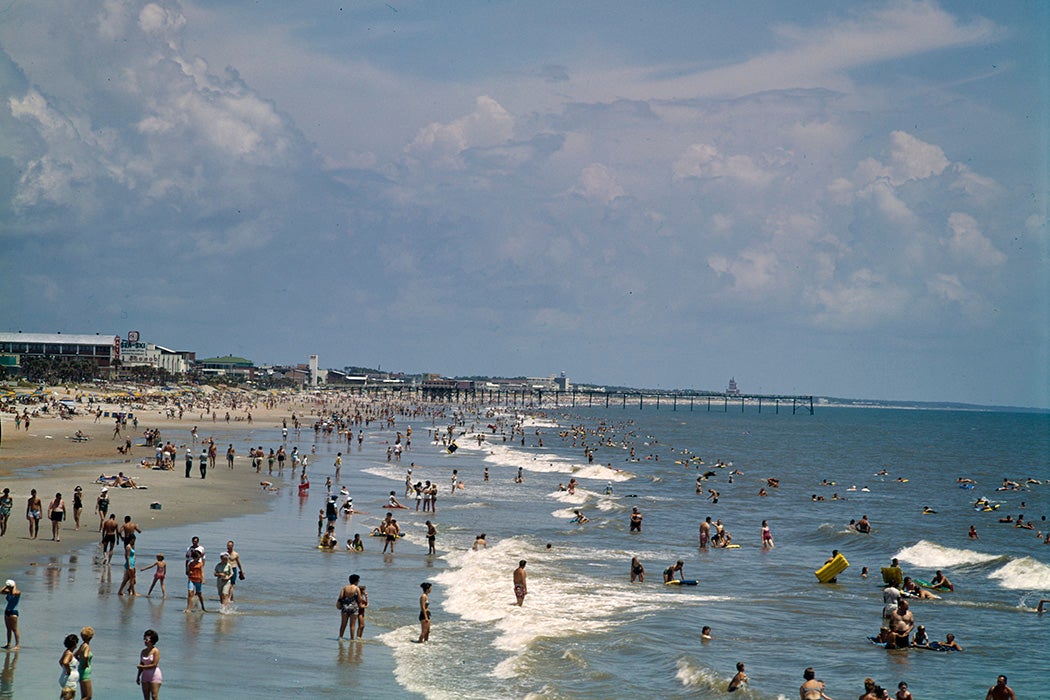For many people, summer means days spent at idyllic beaches that stretch along the coastline of the American South. But as historian Andrew W. Kahrl writes, Americans haven’t always seen southern coasts as attractive places.
At the start of the twentieth century, Kahrl writes, shorelines were the South’s “most forsaken and forgotten lands.” They were unsuited to most agricultural purposes, prone to violent storms, and covered in forests where dangerous animals lived. But developers were beginning to see the promise in creating seaside getaways.
One barrier standing in their way was Black farmers, many of whom had been relegated to the less-fertile land near the ocean. By the 1920s, nightriders were burning Black-owned homes across the coastal South and warning African Americans to sell their land. Local jumps in real estate values were accompanied by increased racial terrorism.
Some Black locals responded with their own development plans. In 1923, a group of Black doctors, lawyers, and ministers bought Shell Island, North Carolina, and turned it into a resort.
“After three successful seasons, it suffered a series of fires ‘of undetermined origin’ that eventually forced investors to cut their losses and abandon the property, thus restoring the ‘color line’ in North Carolina’s coastal real estate market,” Kahrl writes.
To make their plans work, developers didn’t just need land. They needed help from the federal government, which soon obliged. It built roads and bridges to remote areas. And, in the 1930s and ’40s, lobbyists from the American Shore and Beach Preservation Association persuaded federal officials to fund projects fortifying beaches against storms and floods. Some Army Corps of Engineers officials protested, in vain, that it wasn’t their job to protect private property from the forces of nature.
Beyond protecting the beaches, Kahrl writes, the federal government soon found itself responsible for replenishing them with sand and even building new beaches. For example, in 1945, Virginia Beach, Virginia, was a small resort town, many of whose year-round residents were Black farmers. By 1965, it was the state’s largest city. The change was largely thanks to the city, state, and federal governments, which spent tens of millions of dollars turning its wild, unstable coastline into a long white-sands beach. (As natural ocean activity washes the sand away, it must still be replenished frequently.)
Over time, government agencies embraced their pro-development mission. In a 1964 report, “Land Against the Sea,” the Army Corps of Engineers declared that “our campaign against the encroachment of the sea must be waged with the same care that we would take against any other enemy threatening our boundaries.”
Weekly Newsletter
And in 1968, the National Flood Insurance Program began subsidizing the insurance of private coastal property against predictable, periodic floods, encouraging new development. The Sun Belt boom of the next few decades was a testament to that program, and the continuing collaboration between developers and the government.
“Few places benefited more from the power of an activist state to fuel the growth and development of private industry,” Kahrl writes.







